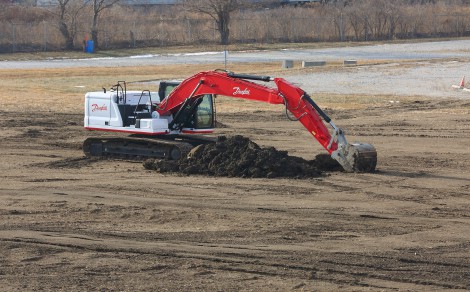Energy efficiency: The first step to decarbonising construction

More than 50% of the world’s population lives in cities today – a number expected to increase to almost 70% by 2050 (1). As the global population continues to soar, construction of new cities and the expansion of existing cities will be required. In fact, the International Energy Agency estimates that global built floor area will increase by around 20% by the year 2030. Domenico Traverso, President, Editron & Incubation Divisions, Danfoss Power Solutions, explains further.
As we build new homes, schools, shopping centres, utilities, and infrastructure to support the growing population, we need to be cognizant of carbon emissions. Materials and construction of buildings currently account for approximately 11% of global emissions (2) . Construction machinery emits around 400 megatons of CO2 annually (3) – equivalent to the emissions from international aviation (4) – with excavators accounting for 50% of all CO2 emissions created by the construction industry (5).
We certainly don’t want to – and can’t – rein in construction. After all, it is central to economic and social development around the world. In the U.K., construction is responsible for one in every 20 jobs and contributes to 6% of GDP. In the EU, the sector provides 18 million direct jobs and contributes to about 9% of the EU’s GDP (6).
But as the scale of global construction activity increases in the decades to come, we must find a way to reduce emissions to reach the goals of the Paris Agreement and combat climate change. We must act now to build the new cities of tomorrow without relying on the building practices of yesterday. Decarbonizing off-highway machines such as excavators will play a critical role.
The future is electric
Electrification holds the largest CO2 mitigation potential for construction machinery, while delivering significant environmental, health, and economic benefits. Already we are seeing a lot of progress from manufacturers as they look to electrify their vehicles, especially smaller machines that often work in city-centre locations. We believe full electrification will come to many forms of construction equipment sooner or later.
However, some challenges need to be overcome if we are to make progress in the decarbonization of construction machinery. At first glance, it may seem simple to follow the same path as passenger cars: make construction machinery battery-electric and charge them with energy derived from renewable sources. This is, of course, easier said than done.
Compared to passenger cars, large machines such as excavators need to work much harder and for much longer between charges, which means they need extremely large batteries to match the productivity of their diesel equivalents. As a result, fully electric excavators consume a lot of resources for the battery and are expensive to buy, so the total cost of ownership over their lifetime can exceed diesel machines by a significant margin.
-
PPMA 2025
23 September, 2025, 9:30 - 25 September, 2025, 16:00
NEC, Birmingham UK -
Advanced Engineering Show 2025
29 October, 2025, 9:00 - 30 October, 2025, 16:00
NEC, Birmingham UK










